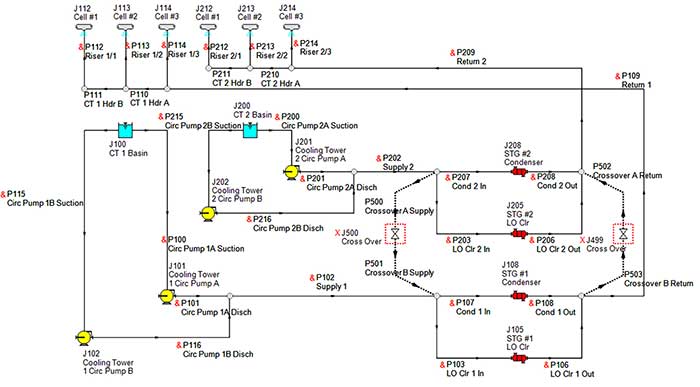Maintain a high system efficiency with varying demand.
Applied Flow Technology
05/07/2019
Design for a pipe network is traditionally a linear process. A piping system design is chosen, and then a pump is selected based off the system head. This process ignores the efficiency of the piping system, but quickly determines a pump required based on the design. Using modeling software gives the engineer the power to analyze multiple scenarios and address the efficiency of the process. As the engineer must iterate on the system design and pump choice sequentially, it is easy to miss intermediate solutions that could potentially achieve greater savings and efficiency. Designing with the pump and piping system in mind can lead to significant savings, especially when flow analysis software with automated sizing capabilities is used.
Why System Efficiency Is Important
The demand for a stronger and smarter water system has been a priority for several years as systems continue to age and breakdown. With finite resources available to handle increasing loads, it becomes clear how important efficiency is to account for the impact of aging components and changes to the system. It is not enough to design for the immediate system, as a rapidly changing market leads to rapidly changing design requirements. The question becomes how can a high system efficiency be maintained with varying demand? There are limits to how much efficiency an engineer can achieve with hand calculations to determine the ideal sizing for a pipe system. While the head required for a single pipeline may be simple to calculate, it becomes more complex for pipe networks. With a hydraulic solver to accurately model the system, this process becomes simpler. Various system configurations can be calculated quickly, particularly with software capable of containing multiple operating cases within one model. For simple cases, such as sizing a control valve for the system, hydraulic software can be used to set the flow or pressure demand, then the software can report the necessary pressure drop needed from the component. However, this process becomes more difficult as the sensitivity of the system to each component must be determined. The engineer must select different combinations to compare as design cases. With this iterative approach, the engineer is limited in the number of cases they can compare. Image 1. Cooling system (Image courtesy of Applied Flow Technology)
Image 1. Cooling system (Image courtesy of Applied Flow Technology)
